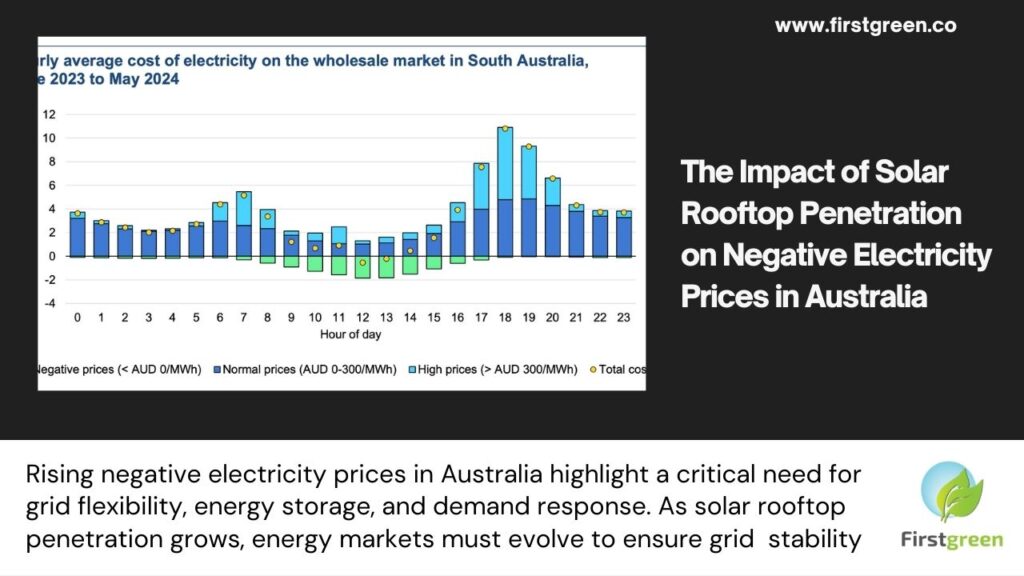The Impact of Solar Rooftop Penetration on Negative Electricity Prices in Australia

Australia’s increasing reliance on renewable energy, particularly solar rooftop installations, has led to a notable rise in negative electricity prices. As the graphic illustrates, the hourly average cost of electricity on the wholesale market in South Australia from June 2023 to May 2024 shows significant periods of negative pricing, especially during midday hours when solar generation peaks.
This trend is primarily driven by the high penetration of solar energy, now exceeding 30% in some regions. The influx of solar power during daylight hours often surpasses the demand, forcing prices into negative territory. In essence, energy producers are paying consumers to take the excess electricity off the grid. This phenomenon underscores a critical challenge: the current grid infrastructure is not flexible enough to accommodate the variability of renewable energy.
The rise in negative prices signals an urgent need for more grid flexibility, energy storage solutions, and demand response programs. However, existing energy exchanges in Australia do not yet offer storage and demand response as tradable commodities. Introducing ancillary services, such as storage and demand response, into the energy market could help mitigate negative pricing by absorbing excess power during peak generation periods and releasing it when demand is higher.
India, too, must take note. As the country approaches 100% renewable energy penetration, similar issues could arise. Without significant improvements in grid flexibility, India may experience negative electricity prices, mirroring the challenges faced by Australia. Proactive measures, including the development of storage solutions, demand response mechanisms, and updated market designs, will be essential to maintaining grid stability and ensuring the economic viability of renewable energy.
#RenewableEnergy #GridFlexibility #NegativePricing #SolarRooftop #EnergyStorage #DemandResponse #ElectricityMarket #AustraliaEnergy #IndiaEnergy #SustainableEnergy